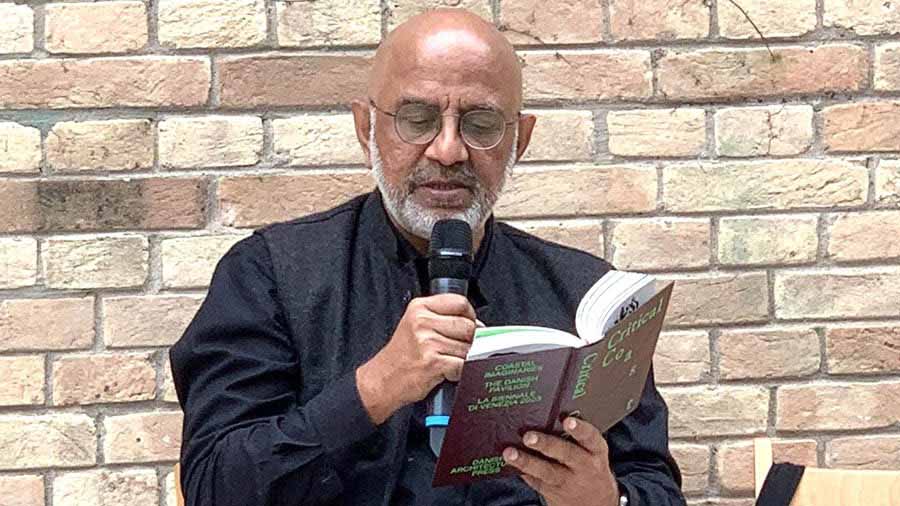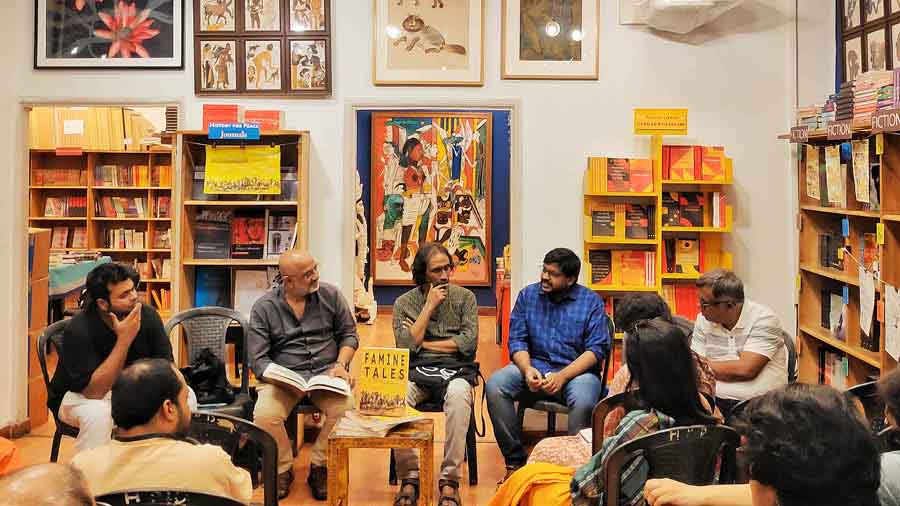“Every time I describe a city, I’m saying something about Venice,” observed Italo Calvino. Truman Capote was more specific, even graphic: “Venice is like eating an entire box of chocolate liqueurs in one go.” For Parimal Bhattacharya, Venice stood out as “a living exhibit of the past”. One of the country’s foremost bilingual writers, Bhattacharya, who is also an associate professor of English at Kolkata’s Maulana Azad College, was in Venice in May to discuss his book, Field Notes from a Waterborne Land. As part of his visit, Bhattacharya attended the 2023 edition of the Venice Biennale, often described as the Eurovision of visual arts.
“I’ve been to the Kochi Biennale multiple times, but being in Venice was something else. It was a marvellous experience,” says Bhattacharya, speaking to My Kolkata at Park Street’s Oxford Bookstore on an afternoon of torrential rain. Bhattacharya had been invited to attend one of the world’s oldest and most exquisite cultural exhibitions by Jeppe Carstensen, editor of Critical Coasts (published by The Danish Architectural Press), which contains cross-disciplinary explorations of ideas relating to coastal futures. The book has contributions from Amitav Ghosh, Rebecca Solnit, Virginia Woolf and Hans Christian Andersen as well as an excerpt from Bhattacharya’s Field Notes. Carstensen was so impressed by Field Notes that he came to Kolkata in January (as part of his trip to the Sunderbans) to interview Bhattacharya, proof of how the book has been making waves far beyond India.
Reading from ‘Field Notes’, discovering Venice, connecting stories and more
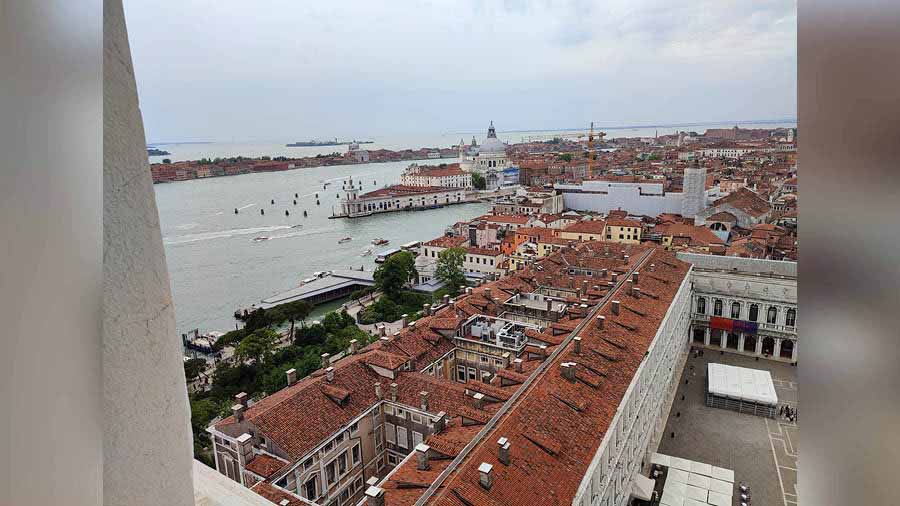
A bird’s-eye view of Venice from atop a bell tower Image courtesy: Parimal Bhattacharya
At the Venice Biennale, Bhattacharya read out a handful of pages from Field Notes, which captivated the audience. “I had around 10 minutes for my reading, but was asked to continue when my time elapsed,” smiles Bhattacharya, who was pleasantly surprised by how all sessions at the Biennale involved a standing audience, with only a few chairs arranged for the aged and the disabled. Bhattacharya also took part in a panel discussion on May 19 on the topic of “Sea Level Rise and the Global Scale — How Should We Approach the Urgency for Action?”. “At a festival of architecture (art and architecture alternate at the Biennale annually), where the theme is ‘the laboratory of the future’, you have a bilingual author from India talking about ecology! That shows the multidisciplinary approach at the Biennale,” says Bhattacharya, who was inundated with requests to connect by fellow attendees.
One such request came from Morten Lund, professor emeritus at the department of architecture in Copenhagen University. Lund wrote an effusive email to Bhattacharya upon the latter’s return to Kolkata, where he shared two significant stories. The first had to do with how Lund, along with fellow architect Jorg Schlaich, was responsible for leading the team that built the Vidyasagar Setu in Kolkata, which was opened in 1992. Lund wrote how separate provisions were made for rivets to be manually fitted onto the bridge so that more local labourers could be employed. In a completely different anecdote in the same email, Lund spoke about his parents, who had met and fallen in love towards the end of the Second World War, united by a “strong sense of purpose and destiny”. Lund even reached out to Bhattacharya with a proposal to translate the former’s mother’s diary entries into English, which constitute a treasure trove of a remarkable romance.
Another intriguing individual who crossed paths with Bhattacharya was Jane da Mosto, a Venice-based firebrand activist who led a movement to stop cruise ships from entering the Venice lagoon and damaging the city’s ecosystem. “It’s inspiring to see how one woman was able to put paid to the cruise lobby, which has some of the most powerful and richest people around,” notes Bhattacharya, who was shown around Venice by da Mosto. The tour included a bird’s-eye view of Venice from atop a bell tower. At that point, Venice must have seemed to Bhattarcharya, in the words of Henry James, as “an orange gem resting on a blue glass plate”.
‘Both Venice and the Sunderbans may not be around in a few decades’ time’
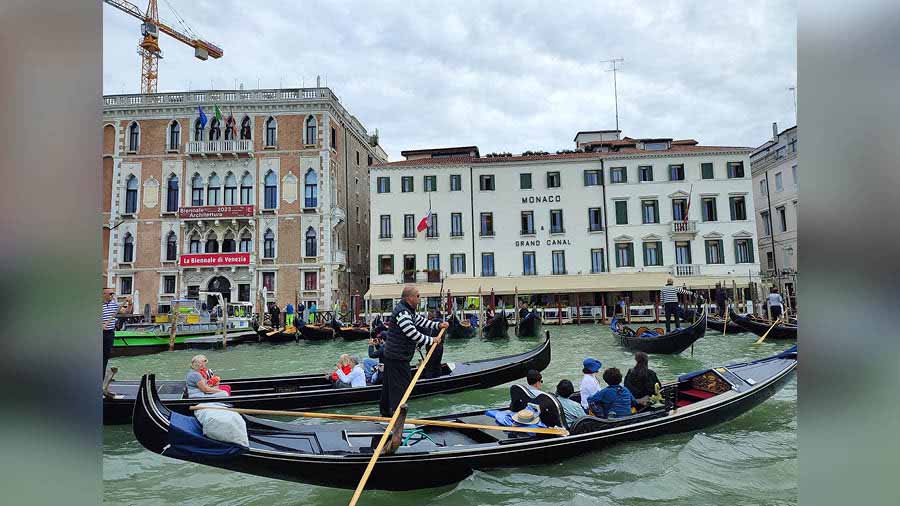
Venice is sinking due to rising water levels, just like the Sunderbans Image courtesy: Parimal Bhattacharya
Built on a group of 118 islands, Venice used to be an important centre of international commerce, at least until Vasco da Gama found a sea route to India towards the end of the 15th century, robbing Venice of its status as the “gateway to the East”. Even today, Venice remains home to the world’s first ghetto, which Bhattacharya checked out with David Garcia, a Denmark-based Jewish artist. Staying at a revamped monk’s retreat from the 15th century, Bhattacharya covered most of Venice on foot in a single day, describing the Venetian Ghetto in Cannaregio (the Jewish hub of Venice) as “half the size of a football field”. Once there, Bhattacharya was fascinated to find extremely tall buildings (unlike in the rest of the city) with synagogues near the top. Garcia explained to Bhattacharya that this was the result of Jewish segregation. Long before the Holocaust unleashed its terror in the 1930s and ’40s, Jews used to be persecuted in Venice and sidelined to occupy a small corner of the city. To ensure that their surging population had enough space for shelter, Jewish buildings were made much taller than usual, since all the Jews had be accommodated inside and could not loiter the streets of Venice in the evening.
Roaming around Venice, Bhattacharya could see clear parallels with the Sunderbans. “Both places are sinking due to rising water levels and may not be around in a few decades’ time,” reflects Bhattacharya, referencing Amitav Ghosh’s Gun Island. “Talking about climate comes off as an elite preoccupation in India, whereas the ones who are most affected by climate change are the poor. And yet, there’s little to no representation of these issues in our media or larger culture,” rues Bhattacharya.
While his time in Venice did little to assure him that the city would be able to stave off its climate crisis, it at least gave him hope to see how “people were interested in discussing climate from a wide variety of contexts and angles”. “At the end of the day, stories unite people, be it in Venice or the Sunderbans. For instance, I came to know at the Biennale about how mining activities in Australia are affecting the indigenous population of the Maoris. It instantly reminded me of what’s going on in the Niyamgiri Hills because of the Vedanta projects (something that Bhattacharya’s book, Satyi Rupkatha, alludes to). When you can humanise a story (as Bhattacharya’s work so often does), it becomes relatable to people. That’s my primary job as a storyteller.”
‘A broader take on Bengal, beyond Kolkata and the Bengal Renaissance’

Bhattacharya is presently occupied with two books, one a graphic novel and the other a unique take on Bengal Image courtesy: Parimal Bhattacharya
Speaking of stories, Bhattacharya is currently working on two. The first is a graphic novel, adapted from Bhattacharya’s The Bells of Shangri-La (published in 2019), which tells a gripping tale of espionage and adventure in the Himalayas. Collaborating with Bhattacharya is Arghya Manna, presently an artist-in-residence at IIT Gandhinagar. “I’ve almost finished with my part of the book, which is the text. Arghya is working on the graphics and is doing a magnificent job. His watercolours are a sight to behold,” says Bhattacharya, for whom ceding creative control was never an issue “as the story has already been published once, and also because Arghya and I share a similar belief system”.
Simultaneously, Bhattacharya is writing a mix of history and fiction, with elements of fantasy, centred on Bengal. “I’ve been planning this for a while. It’s going to be a broader take on Bengal, beyond Kolkata and the Bengal Renaissance. Bengal has such a rich mediaeval history, which I want to capture in this book,” reveals Bhattacharya, confirming that the book will be in English, although “I might do it later in Bengali, too”.
How does Bhattacharya seamlessly shuffle between English and Bengali? In an age where bilingual speakers with equal fluency are few and bilingual authors with equal depth are fewer, how does Bhattacharya interact with two vastly different tongues? “I think for a lot of us being bilingual came naturally. As Bengalis, we read a lot in English, to the extent that many of our thoughts started forming in English. There was a time when our most prominent Bengali writers would write their diaries in English. One of them was Bibhutibhushan Bandyopadhyay, who was quintessentially Bengali in every conceivable way,” says Bhattacharya, whose first experience of reading books came in English, thanks to his brother’s collection in Delhi. Born and brought up in Bhatpara (in North 24 Parganas), Bhattacharya’s tryst with Bengali literature happened only in his university days, with Samaresh Basu (also from Bhatpara) wielding considerable influence.
‘Every language contains seeds of a particular culture’
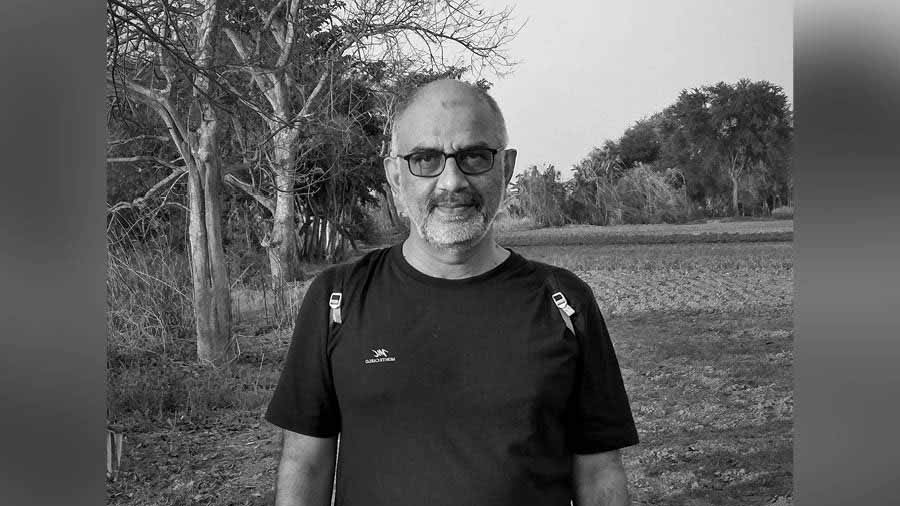
Switching between English and Bengali in his head and on paper has become an instinct for Bhattacharya Image courtesy: Parimal Bhattacharya
“Having read a fair bit of Jibanananda Das, T.S. Eliot and Charles Baudelaire, I started off writing poems in Bengali, before doing a lot of journalistic writing in English for publications such as The Telegraph,” recollects Bhattacharya. As his professional commitments as professor took over, Bhattacharya gave up on full-time journalistic aspirations to focus on writing books that defy genres. Writing full-fledgedly in Bengali was made easier by the arrival of Bengali word processing software on computers, as it meant Bhattacharya was relieved from the onerous task of “figuring out my own handwriting”. Gradually, as he became more and more prolific (he has 17 books to his name so far), “English and Bengali started jostling in my head, talking to one another”. For one of his finest works, No Path in Darjeeling is Straight, Bhattacharya made his notes and initial sketches in English, before writing the original book in Bengali (Darjeeling: Smriti Samaj Itihas) and then transcreating it into English. “There’s a lot of challenges involved in the process, especially around words that don’t have appropriate translations. But I enjoy the challenges. It’s become more of an instinct now,” says Bhattacharya.
When he is not writing or transcreating, Bhattacharya likes travelling, especially trekking to the Western Ghats. He is also a passionate cook, even if “I can’t cook all the recipes I dream of”. The TV has been “banished” from his home in New Alipore, where a lot of his free time is spent indulging in adda, the good old Bengali way. As someone who frequently transitions between English and Bengali in everyday speech, does Bhattacharya ever envision a literary endeavour that combines both languages?
“Bengali books happen faster. English books take longer due to protocol. But a work that has both? I don’t know about that. I think for my last few works I’ve essentially been writing Bengali books in English. That’s to say that even though the medium is English, the sensibility is Bengali,” is Bhattacharya’s response.
Before signing off, Bhattacharya has one last set of questions to navigate. Does writing and thinking in two languages make one richer? Does it mean that authors like Bhattacharya and Jhumpa Lahiri (who has written in Italian and English) are able to access ideas at the margins of expression that no one language can fully articulate? Bhattacharya’s answer, with characteristic poise, is: “Every language contains seeds of a particular culture. When two or three languages are intermingling, then those seeds are transferring their genetic properties to each other. Layers are being added to ideas as well as narratives. That’s how linguistic and cultural enrichment happens.”
